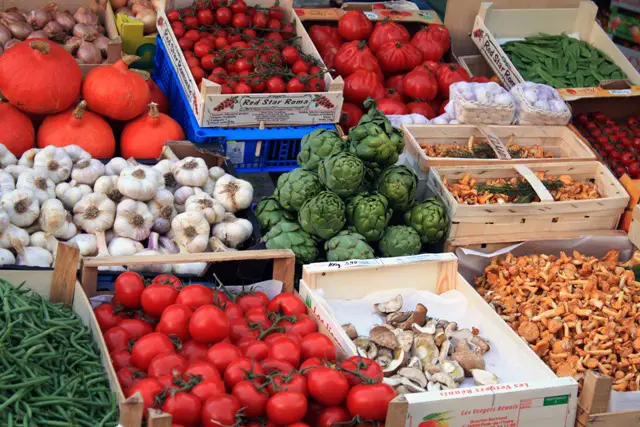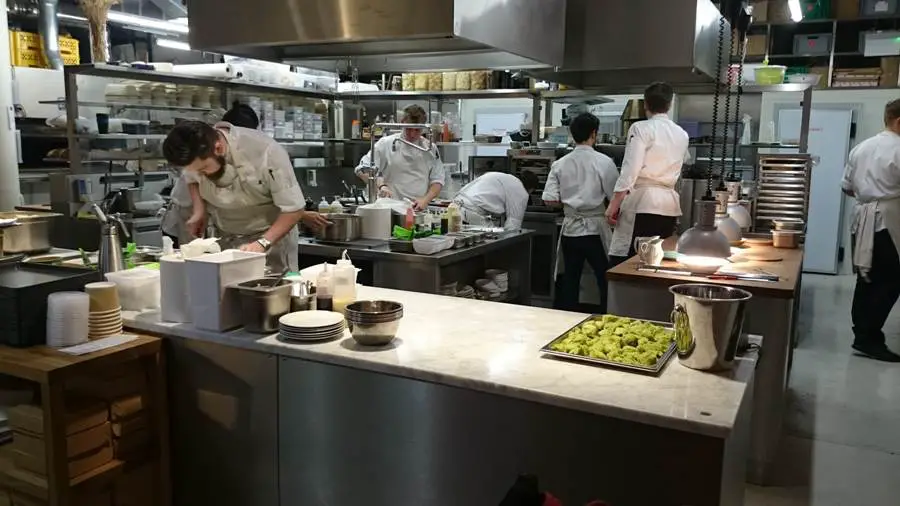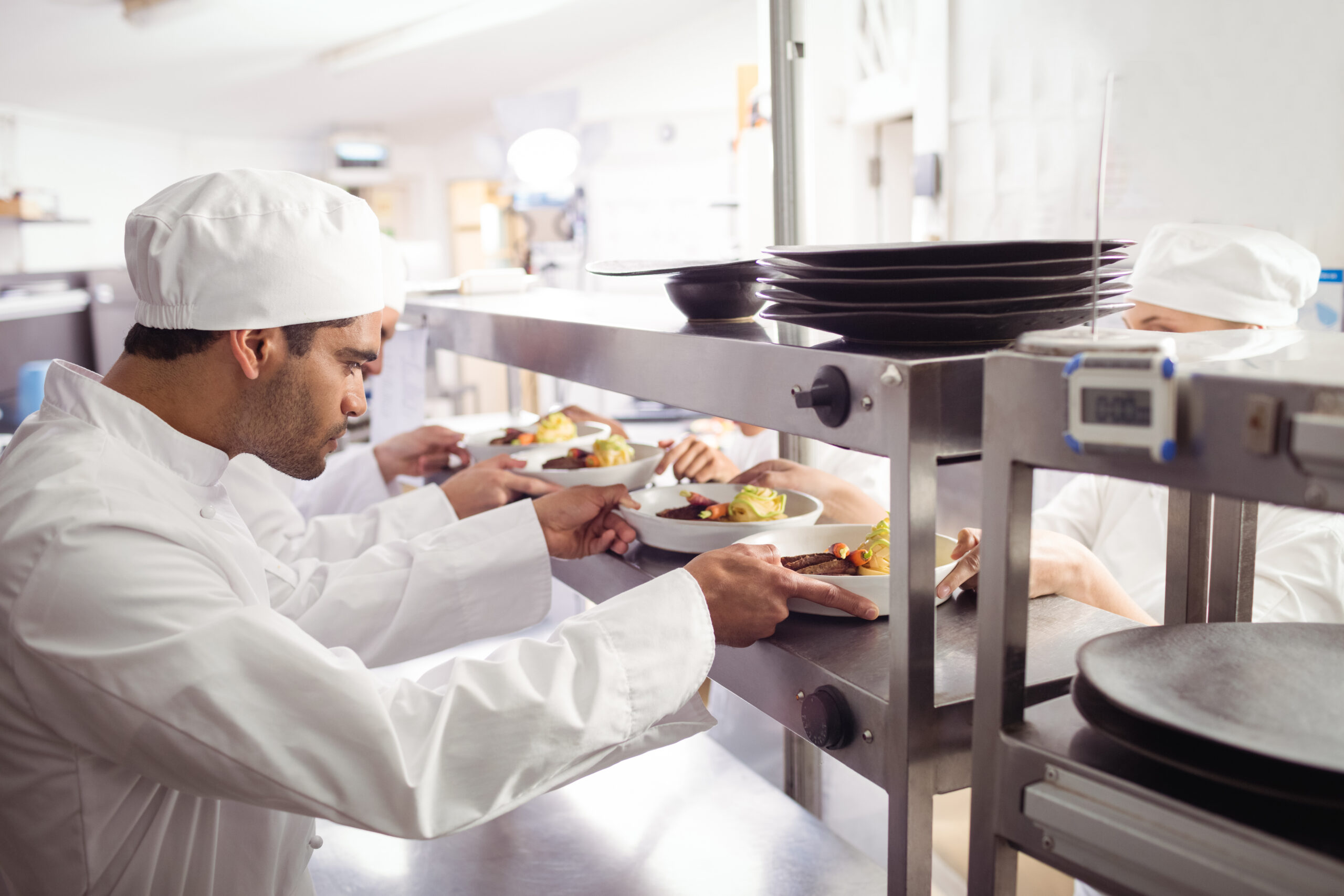
There are provisions to back up any commercial kitchen. This provision comes in the form of what is known as a “kitchen store”.
The preparation of food requires lots of items: “fresh or dry stock items”.
Every day, suppliers of grocery or dry food products, move in and out of catering or hospitality establishments.
Have you noticed a truck or van packed outside a kitchen store area? That truck or van is filled with goods for culinary activities.
Suppliers have specific items they deliver to restaurants, catering companies, or hospitality establishments for their culinary operations.
As a chef, I’ve been in a position where I’ve received items from different suppliers, and have to file receipts or waybills for those items.
I’ve to inspect every item brought, to ensure that they are in good condition before they are sent into the store.

Food commodities
I’ve also worked for a large catering firm, where, sometimes, the store manager will draw my attention to certain items brought by a supplier when he’s in doubt if the product is in proper condition…
If we examine the product and find that it’s not actually in proper condition, we’ll request for replacement…
The supplier will take back the item, and then bring back to us, the same product that is in good condition.
The point here is that all these items that are brought by the suppliers head to one place–the kitchen store.
1. STORE/STORAGE LOCATION
To site a store for kitchen business, location has to come into consideration.
Distance will have to be a factor to be considered between the kitchen and the store.
Easy access to the store from the kitchen is important for the operation.
The location of the store shouldn’t be too distant away from the kitchen for easy collection of items.
Depending on the establishment, the distance between the store and kitchen could range from 20 to 100 meters, but the ideal distance should be between 10 to 50 meters.
For a place built from the onset as a food-service establishment, planning for a store/storage location within the building has already been designed by the architect of the structure.
In a situation where store/storage facility space within the building won’t be enough for product storage, the alternative will be to seek external storage space outside the building.
For a place that is rented for the restaurant business, the renter will plan for space for guests sitting, where the kitchen will be situated, and also where the store will be located.
Usually, dry stock stores are located within the building. The location of cold storage equipment will be another factor to consider.
If this facility (store/storage) is not something that can’t fit into the building, and there is enough space at the back-of-house, then, there’s an alternative.
An outdoor walk-in cold storage facility can be the alternative. This equipment can be costly, but their value for the business is enormous.
This outdoor walk-in cold storage facility is spacious enough to contain a lot of items. If it’s positioned at the back of the house, movement from the kitchen to its location will be easily accessed.
The number of these facilities will depend on the needs of the business.
2. SHELF/COUNTER
Placement or positioning of items in the store is important, whether for dry stock storage or cold storage.
This arrangement makes the store orderly!
Items clustered around on the ground can not allow for easy movement within the store.
Stocks need to be arranged in an orderly manner for easy identification.
Every commercial kitchen store should have a shelf or counter infrastructure within it. This infrastructure makes the store decent and organized.
3. ITEM SEPARATION AND LABELING
Whether products are on-counter or off-counter, their separation, and labeling is important for easy identification.
It’s not enough for items to just stay on the shelf, they have to be separated product-by-product.
This separation allows for decency and neatness on counter surfaces. In large stores, counter-labeling can help dry stock products to be found easily.
Small-size stores may not require counter-labeling, as products can be noticed easily. In large kitchen stores, labels or tags placed on shelves are important for easy item identification.
From time to time, items should be checked for their expiry. Most items, like canned food products, have areas on the canned food, where expiry or life span information can be found.
The shelf life or lifespan of products has to be checked regularly.
4. FIFO APPLICATIONS
For documentation of stocks, “log card or bin card”, are placed on the shelf beside the items on the counter. This system of documentation of stocks can facilitate stock rotation.
When items are brought into the store, stocks are allocated to their bin card. When the storekeeper issues an item, the issued item is subtracted from it’s bin card.
So, it’s a thing of addition or subtraction when using the log card. When undertaking general monthly stock inventory, bin cards make the job a lot easier.
“First-in, First-out” as the name suggests, is a stock rotation procedure whereby a particular old-stock item is in place, and there is a new arrival of that same item, you’ve to ensure that the old one is issued out first, before the new arrivals.
FURTHERMORE:
Storekeeping is a task that requires keen attention and oversight of stocks in storage facilities. Jobs in storage facilities are for conservation or preservation purposes.
From a culinary perspective, a storekeeper should understand that items for culinary work must stay fresh prior to utilization.
Any individual in charge of storekeeping in a catering environment is part of the food production team.
The task of the storekeeper is to support or foster the services of the company through their duties.
This individual should always relate with the kitchen manager regarding the conditions of stocks in the store.
Chefs should understand that a store/storage facility works in hand with the kitchen, and should ensure they give proper attention to it.




